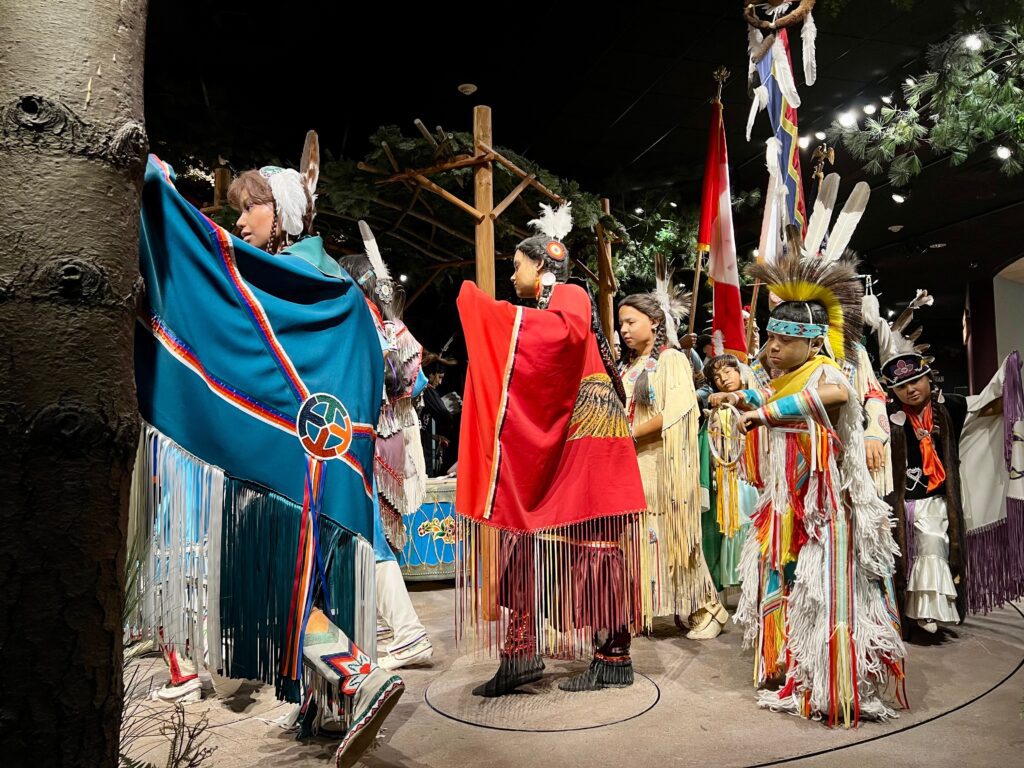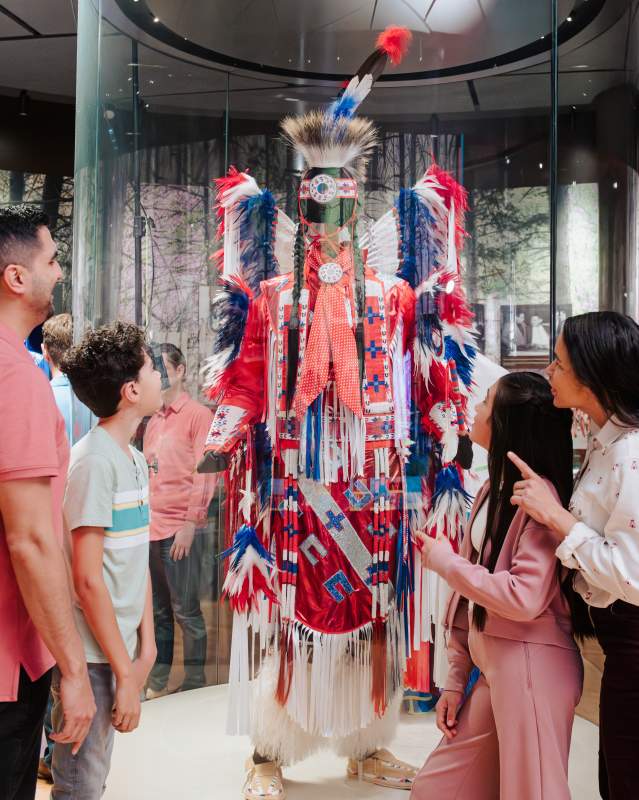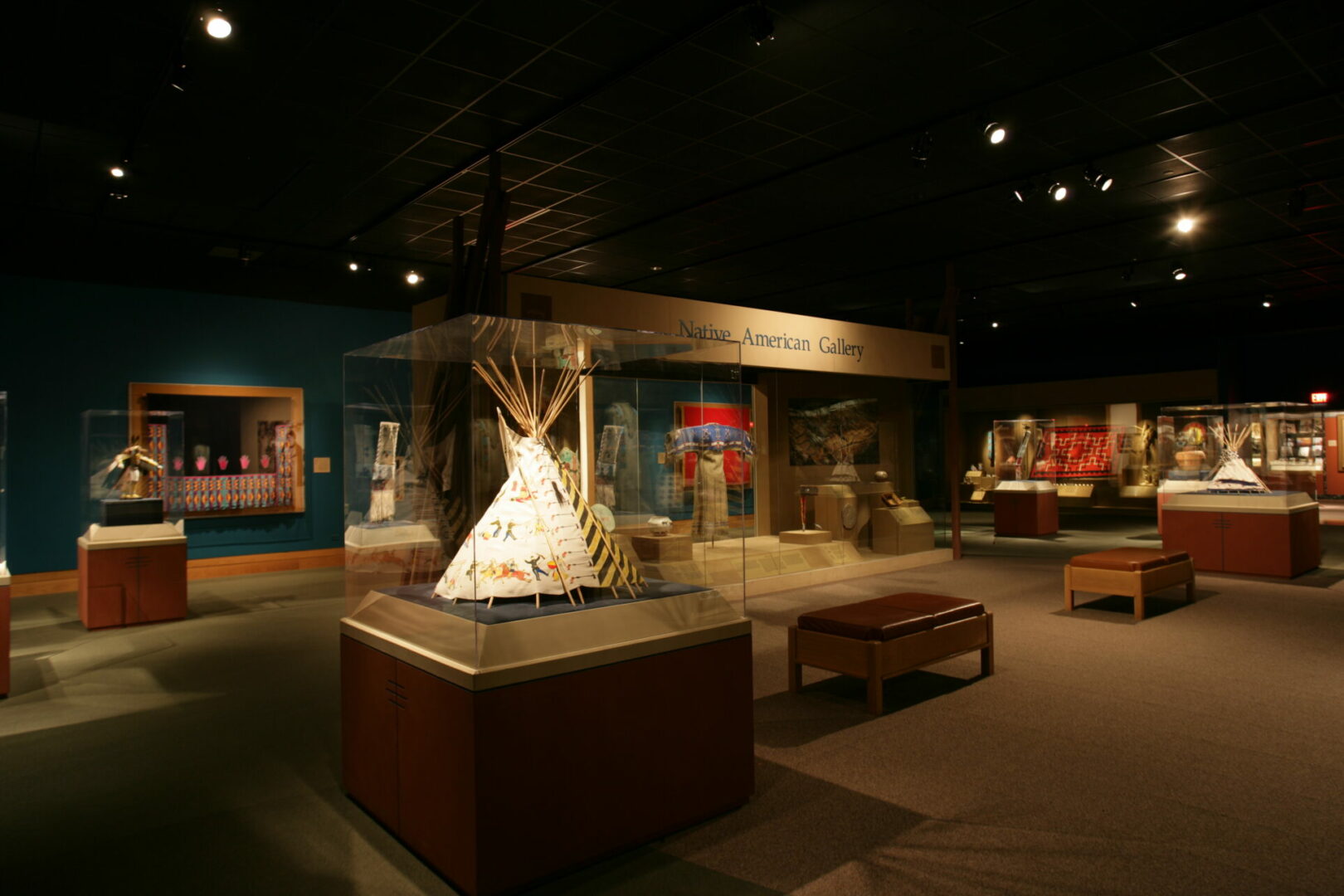
The Dynamic Pulse: Deconstructing Native American Museum Special Events Calendars
Native American museums, far from being static repositories of historical artifacts, are vibrant cultural institutions that actively engage with their communities and the broader public through dynamic and thoughtfully curated special events calendars. These calendars are not merely schedules; they represent a carefully constructed tapestry of programming designed to educate, celebrate, preserve, and revitalize Indigenous cultures, histories, and contemporary experiences. This article delves into the multifaceted nature of these special events, exploring their purpose, diverse categories, ethical considerations, and profound impact, adopting an educational and scholarly approach akin to an encyclopedic entry.
I. Introduction: Beyond the Static Exhibit
Traditionally, museums were often perceived as places where objects from the past were displayed behind glass, offering a one-way transmission of information. However, contemporary Native American museums operate on a fundamentally different paradigm. Recognizing the living, evolving nature of Indigenous cultures, these institutions leverage special events to transform into interactive hubs of cultural exchange, dialogue, and creation. The special events calendar, therefore, becomes a crucial instrument for delivering on their core missions: to foster understanding, challenge stereotypes, promote cultural pride, and serve as platforms for Indigenous voices. By moving beyond permanent exhibitions, these events offer opportunities for deeper engagement, personal connection, and the direct experience of Indigenous traditions and contemporary expressions.
II. The Foundational Role of Special Events

The strategic integration of special events into a museum’s annual programming serves several critical functions:
- Dynamic Cultural Engagement: Events bring culture to life. Rather than simply viewing a historical tool, visitors might participate in a workshop led by an Indigenous artisan, experiencing the process firsthand. This direct engagement fosters a more profound and memorable learning experience.
- Community Building and Collaboration: A cornerstone of ethical Native American museum practice is deep collaboration with Indigenous communities. Special events often emerge from these partnerships, ensuring that programming is culturally appropriate, relevant, and directly benefits the communities it represents. This co-creation fosters trust and strengthens relationships.
- Challenging Stereotypes and Promoting Accurate Narratives: Many historical depictions of Native Americans are rife with misinformation, romanticized notions, or portrayals that freeze Indigenous peoples in the past. Special events, especially those featuring contemporary artists, scholars, and community members, actively dismantle these stereotypes by presenting diverse, nuanced, and current Indigenous perspectives.
- Cultural Revitalization and Intergenerational Knowledge Transfer: For many Indigenous communities, museums and their events play a vital role in the revitalization of endangered languages, traditional arts, and ceremonial practices. Workshops, demonstrations, and performances provide spaces for elders to share knowledge with younger generations and for communities to collectively reinforce their cultural identities.
- Expanding Reach and Accessibility: Events can attract a broader and more diverse audience than traditional exhibits alone. They offer different entry points for engagement, from family-friendly activities to academic symposia, thus democratizing access to Indigenous knowledge.
III. Categorization of Special Events: A Spectrum of Engagement

Native American museum special events calendars are remarkably diverse, reflecting the richness and complexity of Indigenous cultures. These events can broadly be categorized as follows:
A. Cultural Preservation and Revitalization Programs:
These events focus on the active practice and transmission of traditional knowledge and skills.
- Traditional Arts and Crafts Demonstrations: Featuring Indigenous artisans demonstrating techniques such as weaving, pottery, beadwork, basketry, carving, and quillwork. These often include opportunities for hands-on participation.
- Language Workshops and Immersion Programs: Crucial for the survival of Indigenous languages, these programs range from introductory lessons to advanced immersion camps, often led by fluent speakers from local communities.
- Traditional Dance and Music Performances: From social dances like powwows (often held outdoors or in large venues, but museum-supported or related events can occur) to specific cultural performances unique to various nations, these events showcase the beauty and significance of Indigenous performing arts. Museums carefully navigate the public sharing of culturally sensitive performances, always with community guidance.
- Storytelling Circles and Oral Histories: Elders and knowledge keepers share traditional stories, myths, and historical accounts, preserving oral traditions and offering profound insights into Indigenous worldviews.
- Traditional Foodways and Culinary Demonstrations: Exploring Indigenous agriculture, foraging, hunting, and cooking techniques, these events connect visitors to the land and the cultural significance of food.
B. Educational and Scholarly Programs:
Designed to deepen understanding and foster critical thinking, these events often involve academic discourse and expert insights.
- Lectures, Symposia, and Panel Discussions: Covering a wide array of topics including Indigenous history, contemporary social and political issues, environmental stewardship, legal challenges, and art history, led by Indigenous and non-Indigenous scholars, activists, and community leaders.
- Film Screenings and Documentaries: Showcasing films by Indigenous directors or on Indigenous themes, often followed by Q&A sessions with filmmakers or experts.
- Book Readings and Author Talks: Featuring Indigenous authors discussing their works, which span fiction, non-fiction, poetry, and children’s literature, promoting contemporary Indigenous literary voices.
- Curator-Led Tours and Expert Workshops: Offering specialized insights into current exhibitions or collection items, often revealing details not available through standard signage.
- School and Youth Programs: Tailored educational experiences for students of all ages, incorporating interactive learning, hands-on activities, and age-appropriate discussions on Indigenous cultures and histories.
C. Contemporary Indigenous Arts and Performance:
Highlighting the ongoing creativity and innovation within Indigenous communities, these events demonstrate that Indigenous cultures are dynamic and evolving.
- Exhibitions of Modern and Contemporary Indigenous Art: Showcasing new works across various media, challenging perceptions of "traditional" Indigenous art and reflecting contemporary Indigenous experiences.
- Artist-in-Residence Programs: Providing space and resources for Indigenous artists to create new works within the museum setting, often engaging with the public through open studio hours or workshops.
- Live Music Concerts and Performance Art: Featuring Indigenous musicians, bands, and performance artists who fuse traditional forms with contemporary genres.
- Indigenous Theater and Dance Productions: Presenting plays, choreographies, and performance pieces that explore Indigenous narratives, identities, and social commentary.
D. Community Engagement and Advocacy Events:
These events focus on fostering dialogue, supporting Indigenous economies, and advocating for social justice.
- Community Forums and Dialogues: Providing platforms for Indigenous community members and the public to discuss pressing issues affecting Indigenous peoples.
- Indigenous Marketplaces and Fairs: Offering opportunities for Indigenous artists and entrepreneurs to sell their crafts, art, and products directly to the public, supporting Indigenous economies.
- Family Days and Cultural Festivals: Larger-scale events designed for broad appeal, often incorporating multiple elements like performances, demonstrations, food, and hands-on activities.
- Advocacy Events: Partnering with Indigenous organizations to host events focused on environmental protection, land rights, MMIWG2S (Missing and Murdered Indigenous Women, Girls, and Two-Spirit people), and other critical social justice issues.
E. Seasonal and Commemorative Events:
Many events are tied to specific times of the year or significant historical dates.
- Indigenous Peoples’ Day Celebrations: Replacing or supplementing Columbus Day, these events celebrate the resilience and contributions of Indigenous peoples.
- Native American Heritage Month (November): A month-long series of events often featuring diverse programming to highlight the breadth of Indigenous cultures.
- Solstice and Equinox Celebrations: For some nations, these astronomical events hold cultural significance and may be marked by appropriate ceremonies or educational programs, always with community guidance.
- Anniversaries of Significant Historical Events: Commemorating treaties, historical figures, or pivotal moments in Indigenous history.
IV. Principles of Best Practice and Ethical Considerations
The success and integrity of Native American museum special events calendars hinge on adherence to rigorous ethical guidelines and best practices:
- Indigenous Community Collaboration and Co-creation: This is paramount. Events should be developed with and by Indigenous communities, not merely for them. This includes shared decision-making, proper attribution, and equitable compensation for Indigenous knowledge holders, artists, and performers.
- Authenticity and Accuracy: Ensuring that all programming accurately reflects the cultures represented, avoiding misrepresentation, appropriation, or the perpetuation of stereotypes. This often requires deep research and direct consultation.
- Respect for Cultural Protocols: Recognizing and adhering to the specific cultural protocols, sacred knowledge, and ceremonial practices of different Indigenous nations. This may mean certain knowledge is not for public consumption or that specific permissions are required.
- Accessibility and Inclusivity: Designing events to be physically accessible (ramps, sign language interpretation), intellectually accessible (clear language, diverse learning styles), and culturally inclusive (welcoming environment for diverse Indigenous and non-Indigenous audiences).
- Sustainability: Considering the long-term financial, environmental, and community impact of events. This includes securing funding, leveraging volunteer support, and ensuring that events contribute positively to community well-being.
V. Impact and Significance
The special events calendar of a Native American museum is more than a list of dates; it is a declaration of purpose and a testament to the living vitality of Indigenous cultures.
- For Indigenous Communities: Events foster pride, provide platforms for cultural expression and transmission, support artists and knowledge holders, and offer spaces for community gathering and healing. They reinforce cultural identity and resilience.
- For the General Public: These events offer unparalleled opportunities for learning, empathy, and challenging preconceived notions. They provide direct encounters with Indigenous peoples, fostering a deeper, more nuanced understanding of their past, present, and future.
- For the Museum Itself: A dynamic events calendar ensures the museum remains relevant, responsive, and financially viable. It attracts new audiences, strengthens partnerships, and reinforces the institution’s role as a vital cultural and educational resource.
VI. Conclusion
The Native American museum special events calendar is a powerful and dynamic tool, evolving continuously to meet the needs of Indigenous communities and an eager public. By offering a diverse array of programs, from deeply traditional practices to cutting-edge contemporary art, these calendars transform museums into living institutions where culture is not just displayed but actively created, celebrated, and revitalized. Adhering to principles of deep collaboration, authenticity, and respect, these events serve as critical bridges, fostering intergenerational knowledge transfer, challenging colonial narratives, and promoting a richer, more accurate understanding of the enduring power and beauty of Native American cultures. They are, in essence, the vibrant pulse of the museum, ensuring its continued relevance and profound impact on society.


